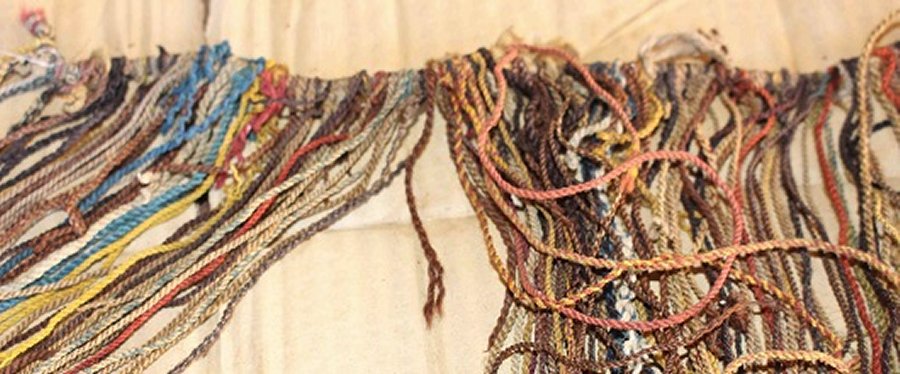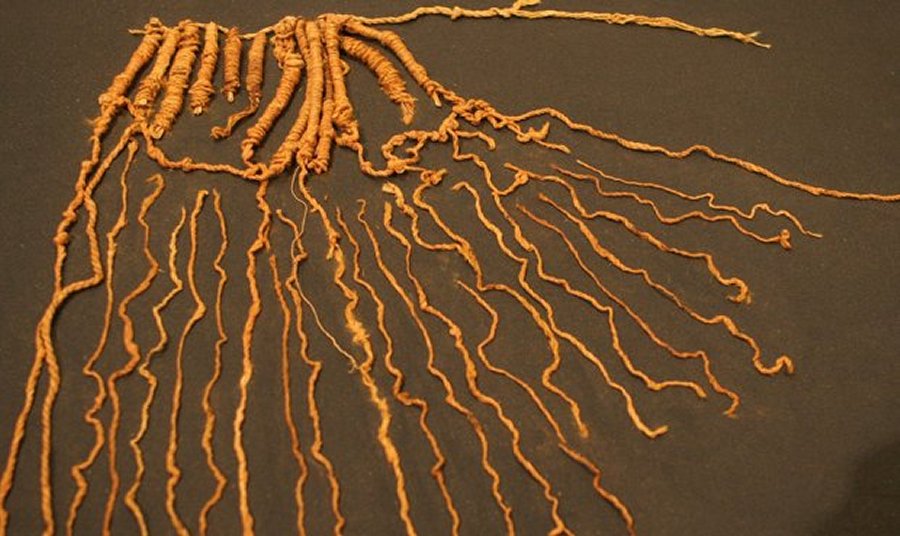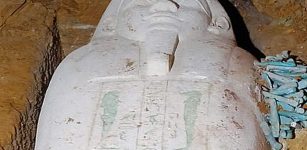‘Collata Quipu’ May Explain Messages Hidden In Mysterious Writing Of Inca
AncientPages.com - Two 18th century ‘Collata Quipu’ artifacts preserved in a wooden box by elders of the region located in San Juan de Collata, in the province of Huarochiri, Peru may offer clues to understanding how some quipus kept and relayed information.

Message Cord. A bundle of animal hairs signals the beginning of a sequence of twisted and knotted cords on an 18th century khipu from a Central Andean village. A bright red tuft of deer hair is followed by a woven cone of hairs from different animals mixed with metallic fibers. New research suggests this and another khipu contain a type of writing.
Inca used combinations of knots to represent numbers, very useful for the storage of corn (corn), beans and other provisions and most of quipu artifacts belong to the Inca period, between 1,400 and 1,532 AD.
However, Spanish accounts of colonial times indicated that the Incas also decoded histories, biographies, letters and other important information.
According to Collata villagers, the quipus are sacred writings of two local chiefs concerning a late 18th century rebellion against Spanish authorities.
See also:
Secrets Of Quipu - One Of The Most Mysterious Phenomena That Existed In Odd Number Of Dimensions
Ancient Chinese Version Of Quipu -Tradition Of Tying Knots Dates Back To Antiquity

The lost “written” language of the Inkas used twists of coloured animal hair rather than ink and paper. Image credit: University of St. Andrews
According to Sabine Hyland, anthropologist at St. Andrews University "the ropes have 14 different colors for 95 unique rope patterns and the number is within the range of symbols in logo syllabic writing systems".
Each Collata quipu consists of a horizontal cord from which a series of cords hang. One Collata specimen contains 288 hanging cords separated into nine groups by cloth ribbons tied at intervals along the top cord. The other quipu features 199 hanging cords divided by ribbons into four groups. Knots appear only at cord ends to prevent unraveling. In contrast, proposed accounting quipus contain many knots denoting numbers.
These specific combinations of strings could represent syllables or words and the special thing about them, as Hyland explained, was that they contained "a series of complex color combinations between the strings."
One quipu starts with a tuft of bright red deer hair, followed by a woven, cone-shaped bundle with metallic-colored thread. The second quipu begins with a woven, tube-shaped bundle of multicolored alpaca hair atop the remains of a red tassel.
“The Collata khipus are completely unlike accounting khipus that I have been studying for over a decade,” Hyland says. Central Andean khipus generally viewed as accounting devices were often made of cotton, and they contain two main colors, between 15 and 39 cord combinations and repetitive knot sequences.
Hyland's analysis indicates that the quipus of St. John of Collata are the first identified as narrative by descendants of its creators.
These quipus are larger and more complex, and unlike others of their kind, are made of hair and fiber from Andean animals.
Research is published in Current Anthropology.
AncientPages.com
Expand for references




















